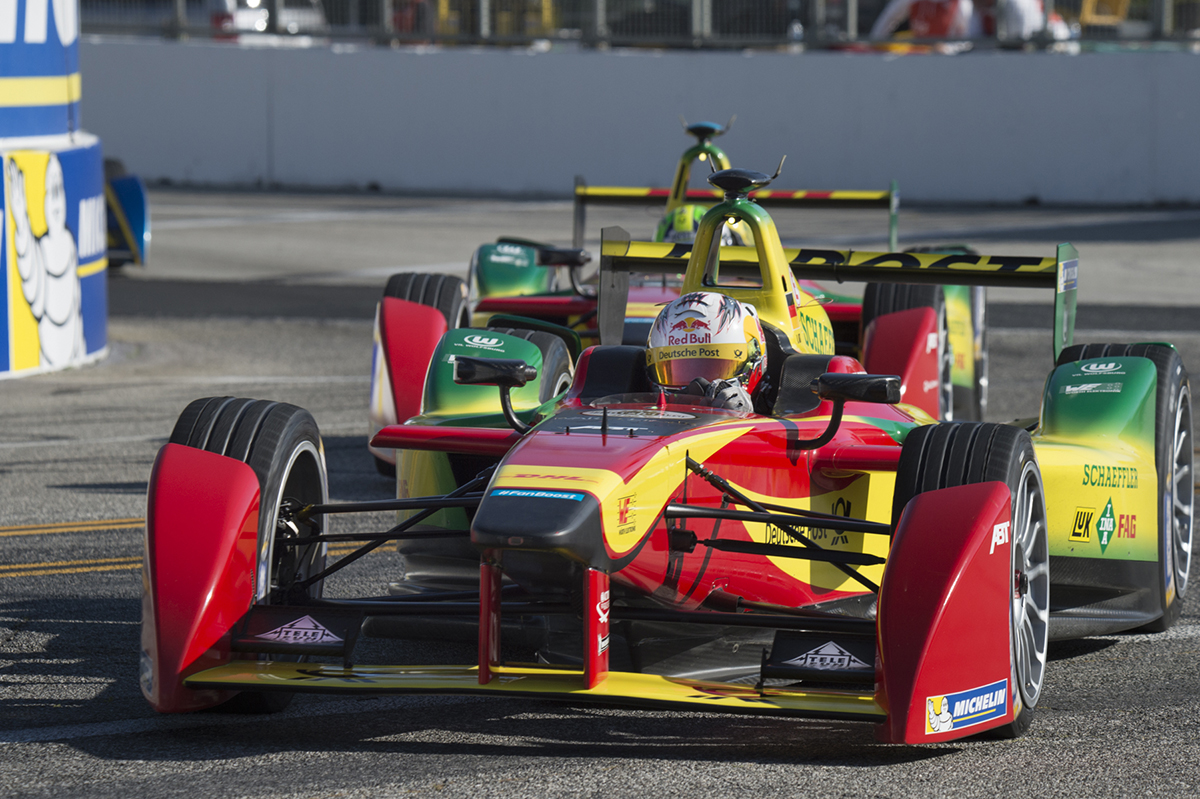Built for Speed
Jan Wagner captures the action on the racetrack and in the air with his Tamron SP 150-600mm VC lens.
By Jenn Gidman
Images by Jan Wagner
In addition to writing his weekly syndicated "AutoMatters+" column, San Diego photographer Jan Wagner also shoots most of the photographs for it. From a Blue Angels air show to an all-electric FIA Formula E race on the streets of Long Beach, Jan is front and center, putting together a pictorial that tells the story of each action-packed performance.
Whether he's photographing a close race on a speedway or an F/A-18 Hornet formation up in the clouds, Jan relies on the Tamron SP 150-600mm VC lens to capture that action. "I need the long reach of this lens," he says. "My subjects are often very far away from me. The 150-600 allows me to get close to it all without having to buy a super-expensive, heavy lens that I'd then have to carry around all day."
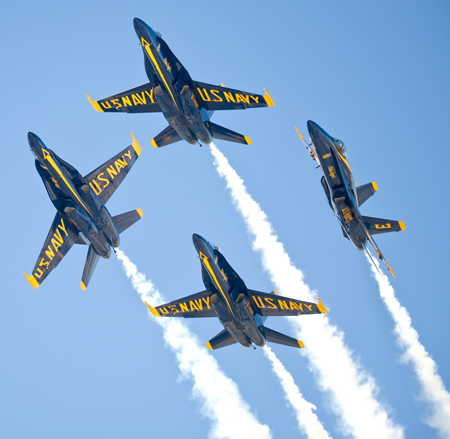
The 150-600's fast focusing speed and Vibration Compensation (VC) features help Jan achieve the sharpness he's looking for in his images. "Shooting motorsports you're often off in the dirt, with your subjects moving all over the place," he says. "You can't really use a tripod. That's why the 150-600's VC is invaluable for me. It enables me to shoot sharp images hand-held at ridiculously low shutter speeds."

Jan often applies for press photo credentials to secure optimal positioning for picture-taking. "That enables me to go between the safety fence that protects the paying spectators and the second fence, which is literally attached to the wall that that the cars race beside. As credentialed photographers we shoot through pre-cut photo holes in the chain-link fencing—literally as close to the cars as we can possibly get. When a car speeds by you at 200 mph, those little pieces of dirt or rubber that shoot up can hit you like BB pellets if you're not careful."
And he's had some close calls. "A few years ago I was covering an IndyCar race at Auto Club Speedway in Fontana. I was shooting through a photo hole at the outside of Turn 4, which leads onto the main straightaway and toward the start/finish line," he says. "As I was shooting, two IndyCars crashed into each other and then slid along the wall. Sparks and flames were flying, and smoke was everywhere. I was bobbing up and down, not sure whether to duck or try to get the shot. Making the situation even worse, the autofocus tried to focus on the smoke instead of the cars."
“Afterward, when I examined one of my photos, I noticed a long carbon-fiber suspension piece frozen in midair as it zoomed past my photo hole at very high speed. That's why we have to sign waivers!"
There is no one correct way to shoot a car race, according to Jan. "Having the experience of shooting and also competing in motor sports for many years has given me the insight to sometimes anticipate likely on-track action," he says.
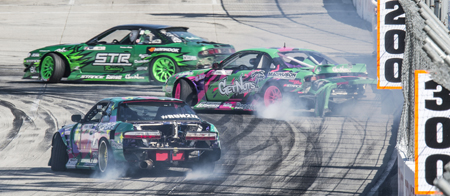
"There are certain situations when you'll want to shoot racing cars at a slow shutter speed," he continues. "If the vehicle is moving in front of you from one side to the other, pan your camera with it, matching the speed of your pan with the speed of the vehicle as it's racing by. By doing that, combined with shooting at a slow shutter speed, the background will blur while the car remains in focus. This creates the illusion of speed in a still image. Experiment by shooting at progressively slower shutter speeds until you determine your slowest shutter speed that still keeps the car in focus."
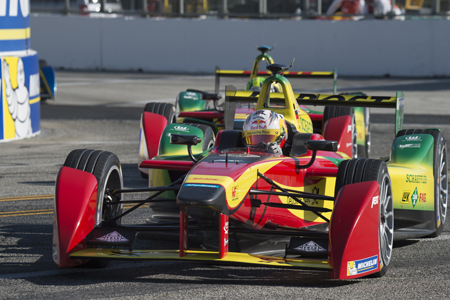
If there will be several racing cars in your frame, and you shoot at exceptionally low shutter speeds to blur the background, inevitably some of the cars won't be in very sharp focus. "In this case I increase the shutter speed, but not so much that the spinning wheels and tires are no longer blurred," Jan says. "If they're frozen by a high shutter speed, the cars won't look like they're moving. The shutter speed you should use will depend upon how fast the cars are going—1/320th to 1/640th of a second is a typical range for me to accomplish this."
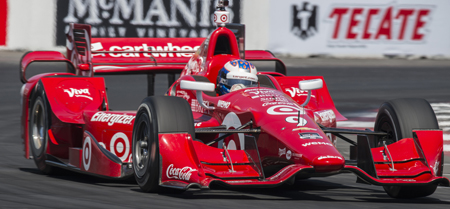
Capturing the fine details of a motorsports crash calls for a different strategy. "You don't want to shoot at a low or even at a moderate shutter speed if there are little pieces of debris flying through the air—if you do, much of what you're shooting will be a blur," Jan explains. "You should use a high shutter speed to accomplish this. However, don't shoot at too high a shutter speed or your picture quality will begin to suffer. I rarely shoot anything at much over 1/1,000th of a second, even though my cameras are capable of shooting at much higher shutter speeds than that. When shooting motorsports, you need to be good at anticipating what's about to happen, be able to quickly switch your camera settings back and forth, and be lucky."
The same applies to photographing air shows. "The aircraft move so quickly that you'll often miss the action if you don't find out in advance what's about to happen," Jan says. "Try to listen to the announcer."
There are other major factors involved in shooting planes. "You're not just pointing your camera from side to side; you're also pointing it up and down, and even continuing up and behind you," he says. "And again, there's no one shutter speed that suits all situations."
For example, if you're shooting propeller-driven airplanes that are flying toward or away from you, the last thing you should do is shoot them at a high shutter speed. "Doing that will freeze the propellers, which won't look natural," Jan says. "You want to shoot at a slow-enough shutter speed so that the motion of the propellers is blurred, but still fast enough to keep the airplane in sharp focus."
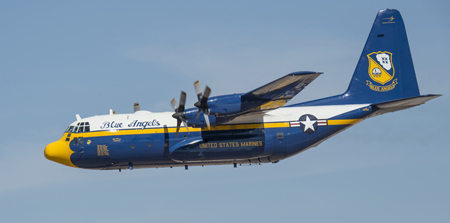
Shooting with existing lighting can be a real challenge, Jan explains. "Car races don't always take place on nice, sunny days—they can go on in the rain or even at night," he says. "I prefer to shoot with cameras that work well in low-light conditions, and I choose lenses that can compensate for less-than-ideal lighting conditions. The excellent Vibration Compensation (VC) feature of Tamron's very reasonably priced 150-600 lens gives me such amazing image stabilization that I can shoot hand-held at very low shutter speeds to help make up for the lack of light. I've taken sharp photos with this lens at an unbelievable 1/125th of a second hand-held."
One thing that Jan typically doesn't mess around with is arbitrarily setting the ISO, preferring to use Auto ISO instead. "That's one less thing for me to have to do, which is important when shooting events with lots of action in several directions," he says. "I set a preference for ISO 200 but allow the camera to bump that up to as high as ISO 6400—even ISO 10,000 if I'm trying to shoot fast action at night. Yes, grain will start to become apparent at these higher ISOs, but at least I'll get usable images."
It's important to note, however, that Auto ISO doesn't work consistently well if the light is drastically changing as you shoot—which it may be, say, if you're quickly panning from light to dark areas. "You'll likely end up with some overexposed and/or underexposed images," Jan says. "Instead, I manually set an ISO in those circumstances. I determine a ballpark ISO number by shooting a test image using Auto ISO, then manually set the camera for that ISO."
Jan also uses the exposure compensation dial almost as much as he uses the shutter release button. "I quickly look at what I've just shot and then bump the exposure up or down a little before shooting again."
Once the main event is over, Jan advises looking for after-show activity that might provide interesting photo ops. "For example, I attended a Goodguys Rod and Custom car show recently," Jan says. "After the exhibit halls closed, the cars cruised around the Del Mar Fairgrounds. We got to watch all of these cool-looking hot rods and vintage cars drive by. Some of the drivers started showing off with burnouts and drifting, and there was an accident. Luckily, it didn't look like anyone got seriously hurt. It's always exciting until it isn't."
To build up the expertise that will enhance your speedway or air show images, Jan offers one critical piece of advice: Go to lots of events, and take plenty of pictures there. “I don't do pre-event practice shoots,” he says. “At any major event that I cover, I'll easily shoot well over 1,000 photos. That's how I continue to improve my skills as a still photographer."
To see more of Jan Wagner's work, his recent "AutoMatters+" columns are archived in the Del Mar Times at http://m.delmartimes.net/staff/jan-wagner.
